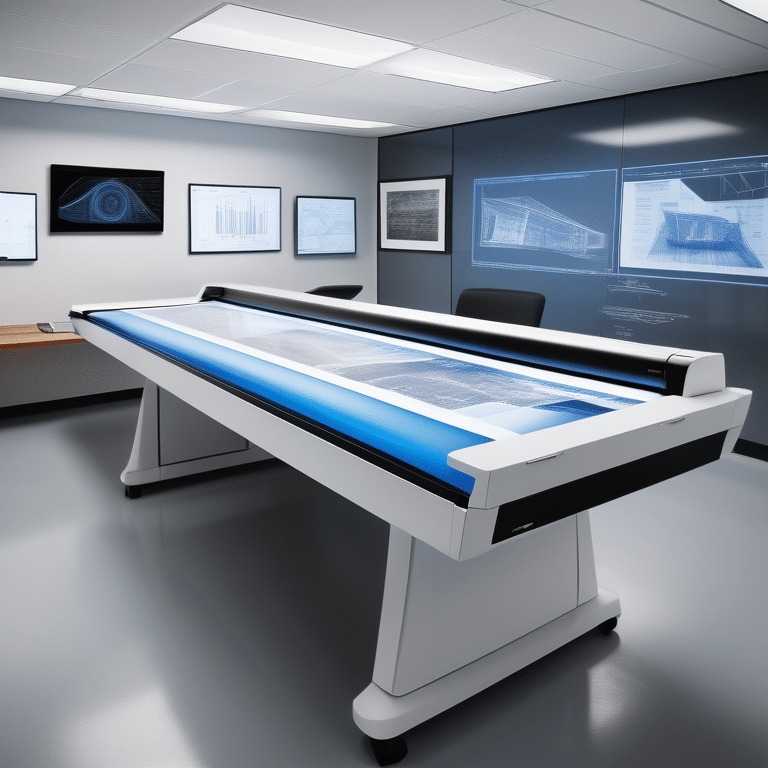
Key Highlights
- Wide format scanning solutions high-quality scans for documents, such asprints, maps, and.
- These scanners CCD technology to capture detailed images with color accuracy.
- offer ease of use intuitive touch panel controls and versatile scanning options.
- Wide format are essential in industries like architecture, engineering, and graphic design where large technical documents need to be digitized for storage and sharing.
- Choosing the right wide format scanner depends on factors like scanning volume, document types, and compatibility existing systems.
- Top wide format scanner models on the market include Contex HD Apeiron, SD One, and IQ Quattro.
Introduction
Wide format scanning solutions have become a necessity in industries that deal with large technical documents, blueprints, maps, and artwork. These scanners offer the ability to digitize and store these documents while maintaining high-quality and accurate color reproduction. With advancements in technology, wide format scanners have become more efficient, providing faster scanning speeds, higher resolution, and improved workflow optimization.
Understanding the importance of wide format scanning is crucial for businesses and professionals who rely on accurate and detailed digital images of large documents. Whether it’s architectural firms needing to digitize blueprints, engineering companies requiring precise scans of technical drawings, or graphic designers wanting to preserve and share artwork, wide format scanners offer the perfect solution.
In this blog, we will explore the basics of wide format scanning, the importance of wide format scanners in various industries, different types of wide format scanners available, key features to look for in a wide format scanner, how to choose the right scanner for your needs, top wide format scanners on the market, and the latest advancements in wide format scanning technology. By the end of this blog, you will have a comprehensive understanding of wide format scanning solutions and be well-equipped to make an informed decision when it comes to choosing the right scanner for your specific requirements.
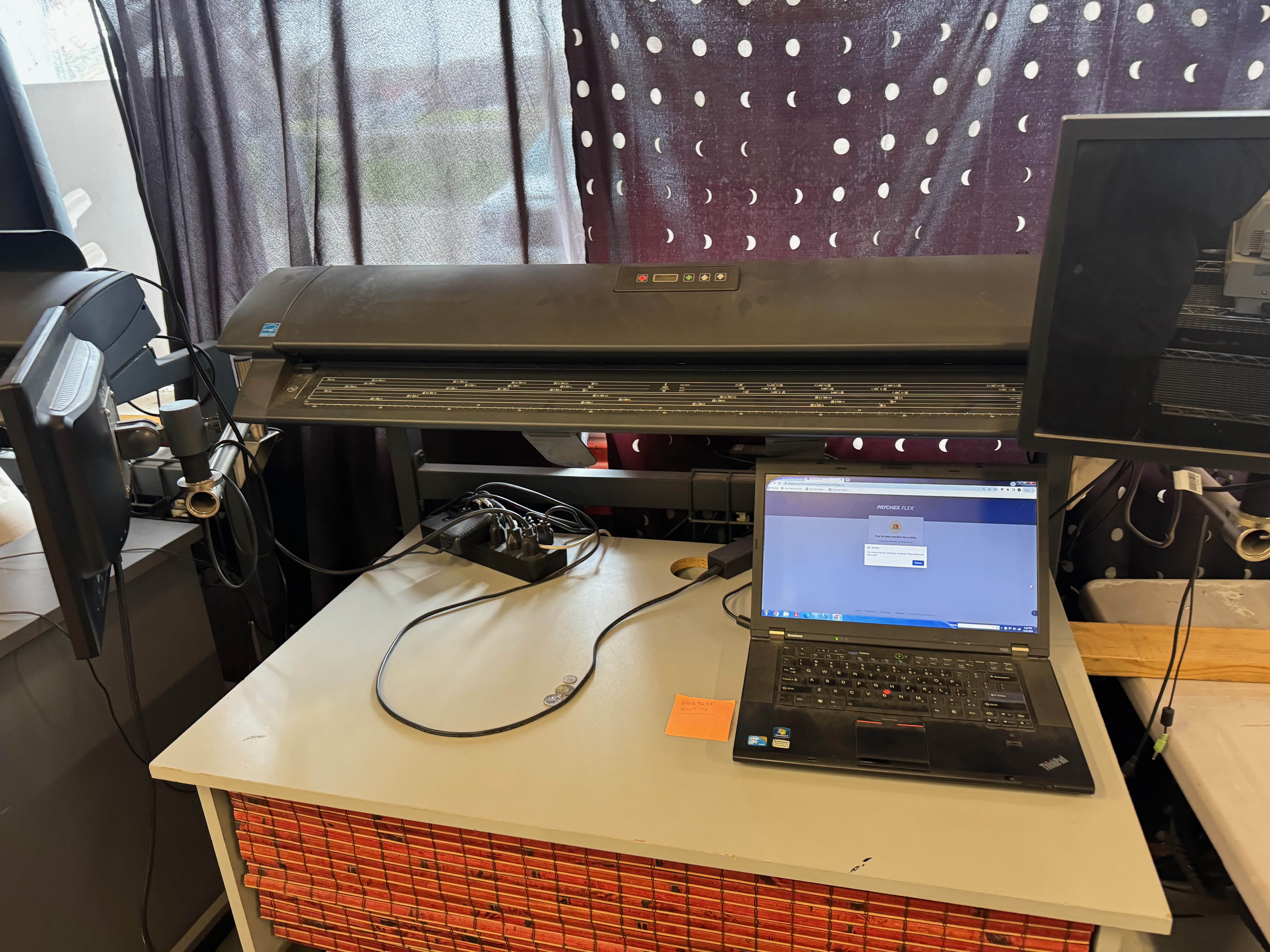




Understanding Wide Format Scanning
Wide format scanning refers to the process of capturing digital images or scans of large-format documents, such as blueprints, maps, technical drawings, and artwork. These documents are often too big to be scanned using traditional desktop scanners, requiring specialized equipment designed to handle large sizes.
Scanning large-format documents is essential for preserving and sharing vital information in a digital format. It allows for easy storage, retrieval, and reproduction of these documents. Wide format scanners use advanced technology, such as CCD (Charge-Coupled Device) sensors, to capture high-resolution scans with accurate color reproduction. These scanners offer various scanning options, including scanning to file or scanning to print, depending on the specific needs of the user.
https://cookiedatabase.org/tcf/purposes/
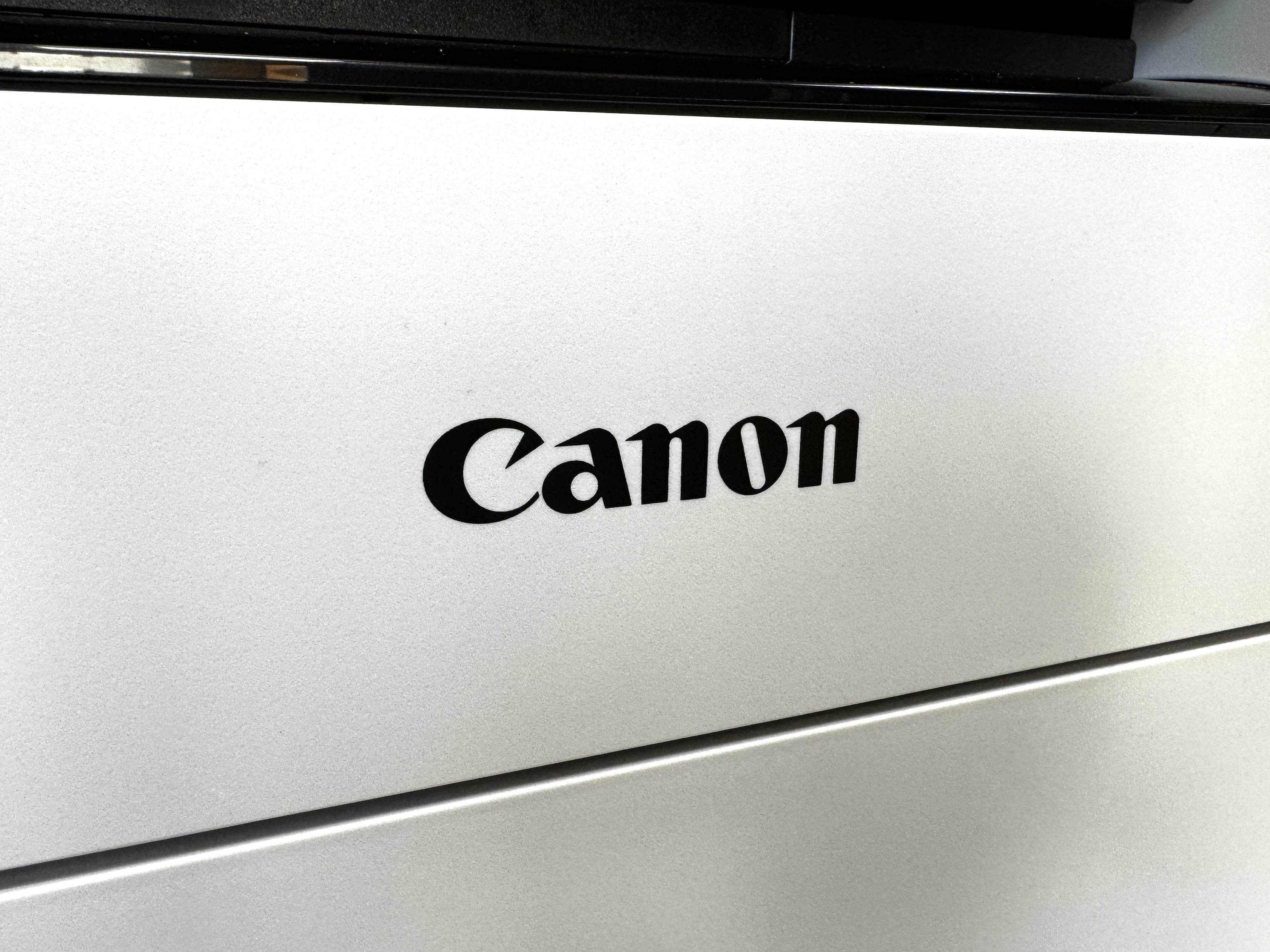










The Basics of Wide Format Scanning
Wide format scanning involves the use of specialized scanners designed to handle large documents. One popular option is the Contex IQ Quattro series, which offers advanced scanning capabilities for large format documents. These scanners are equipped with high-resolution image sensors to capture detailed scans with precise color accuracy.
The IQ Quattro scanners utilize contact image sensor (CIS) technology, which allows for faster scanning speeds and improved image quality. The CIS technology eliminates the need for moving parts, resulting in a more durable and reliable scanning solution. These scanners are also equipped with intuitive touch panel controls, making them easy to use and navigate.
With the IQ Quattro series, users can easily scan, store, and share large format documents, such as blueprints, maps, and technical drawings. The scanners offer versatile scanning options, allowing users to choose between color or black and white scanning, as well as different resolution settings to suit their specific requirements.
Importance of Wide Format Scanners in Various Industries
Wide format scanners play a crucial role in various industries where large format documents need to be digitized and stored. Here are some industries that benefit from wide format scanning solutions:
- Architecture and Engineering: Wide format scanners allow architects and engineers to digitize and preserve blueprints, technical drawings, and construction plans. These digital copies can be easily accessed, shared, and edited, enhancing collaboration and efficiency.
- Graphic Design and Fine Art: Artists and graphic designers can use wide format scanners to digitize their artwork and create high-quality reproductions. This allows for easier sharing, printing, and archiving of artwork.
- Mapping and GIS: Wide format scanners are essential in cartography and geographic information systems (GIS) industries, where large maps and spatial data need to be digitized for analysis and visualization purposes.
- Construction and Manufacturing: Wide format scanners are used to digitize construction plans, schematics, and manufacturing diagrams, enabling faster information retrieval and accurate documentation.
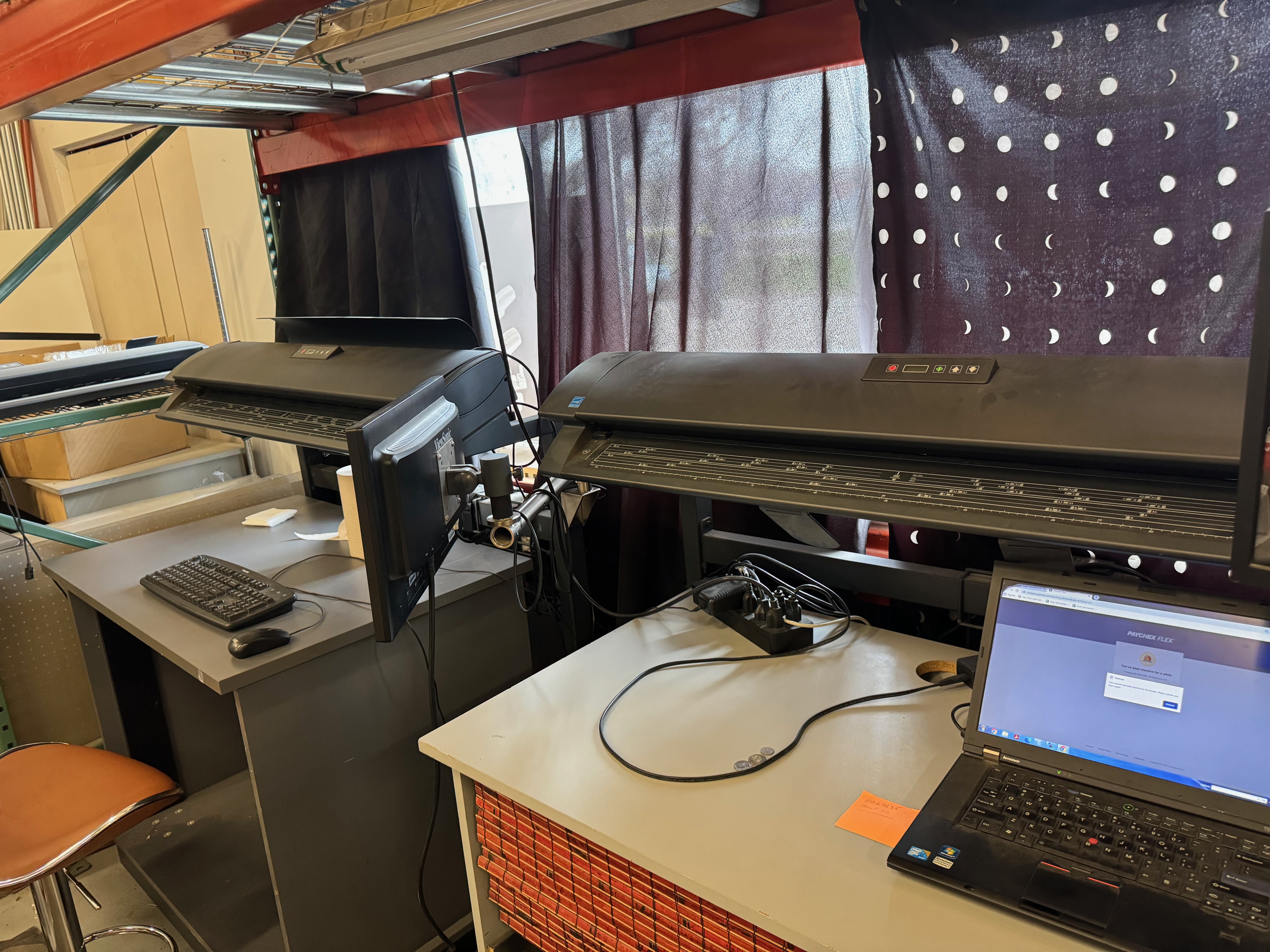

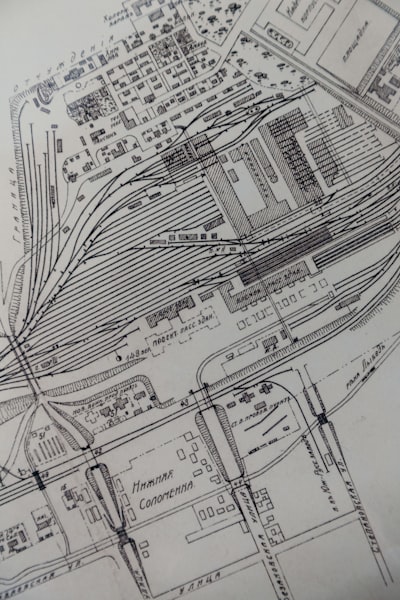




Types of Wide Format Scanners
Wide format scanners come in different types to cater to various scanning needs. The three main types of wide format scanners are flatbed scanners, roll-feed scanners, and large format scanners.
Flatbed scanners, like the Contex IQ Flex, offer a versatile scanning solution for a wide range of documents. They feature a flat scanning surface where the document is placed for scanning. Flatbed scanners are ideal for fragile or delicate documents, artwork, and books.
Roll-feed scanners, such as the Contex HD Ultra X series, are designed for high-speed scanning of large documents. They feature a roll-fed mechanism that allows for continuous scanning of long documents, such as blueprints and technical drawings, without the need for manual intervention.
Large format scanners combine the functionalities of flatbed and roll-feed scanners. They offer the flexibility to handle both delicate documents and long-format documents, making them suitable for a wide range of scanning applications.
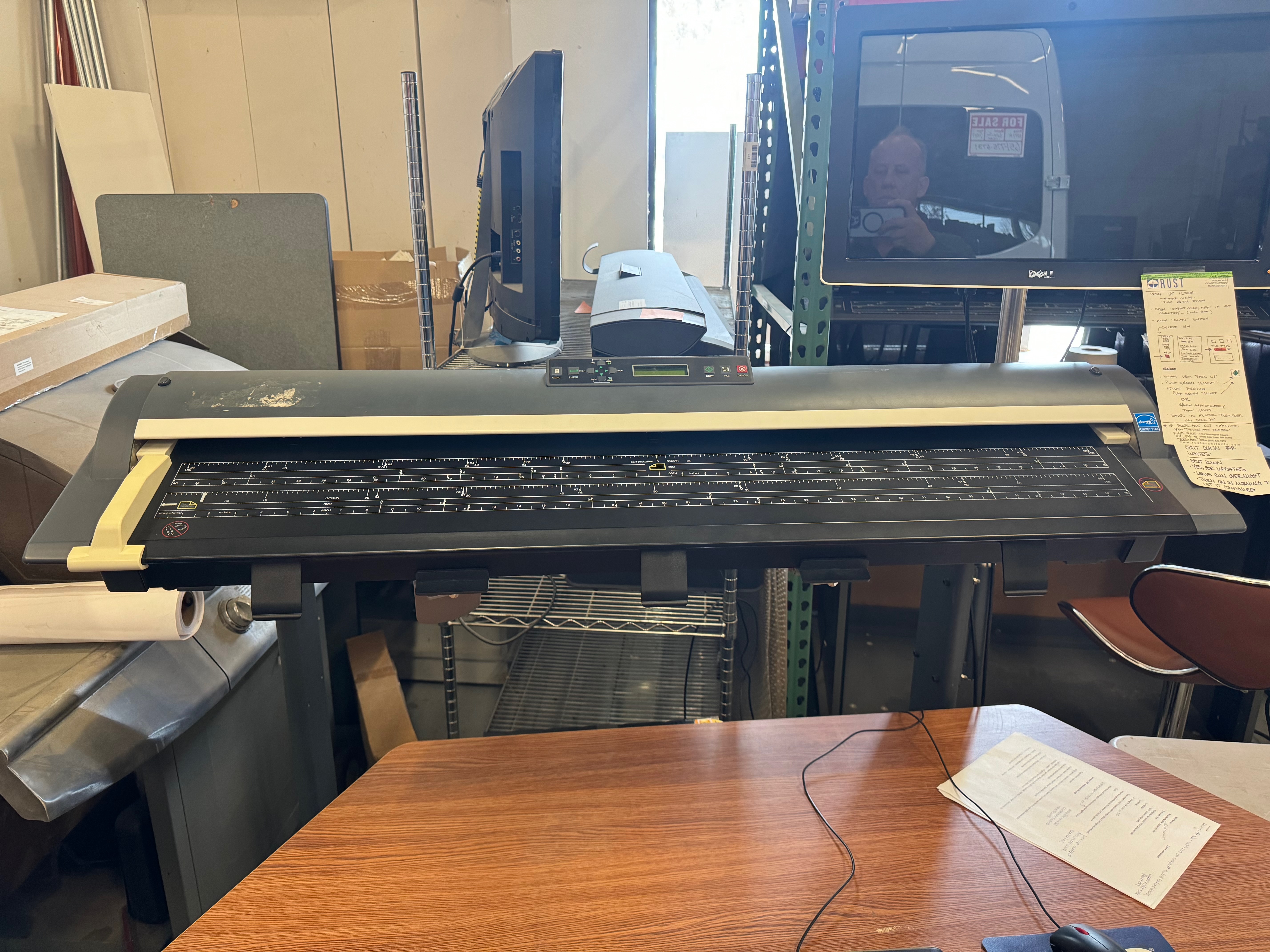












Flatbed Scanners for Large Documents
Flatbed scanners, like the Contex IQ Flex, are ideal for scanning large documents that may be fragile or delicate, such as artwork, fine art, and books. These scanners feature a flat scanning surface where the document is placed for scanning.
The Contex IQ Flex offers an adjustable stand that allows for easy positioning of documents, ensuring accurate scanning results. It utilizes contact image sensor (CIS) technology, delivering high-resolution scans with precise color accuracy. The IQ Flex is also Wi-Fi enabled, allowing for wireless scanning and easy integration with existing systems.
With the IQ Flex, users can scan documents up to 18″ x 24″ in size, making it suitable for a wide range of applications. Its compact design and user-friendly interface make it a convenient and efficient solution for scanning large-format documents.
https://shop.ring.com/pages/neighbors-app
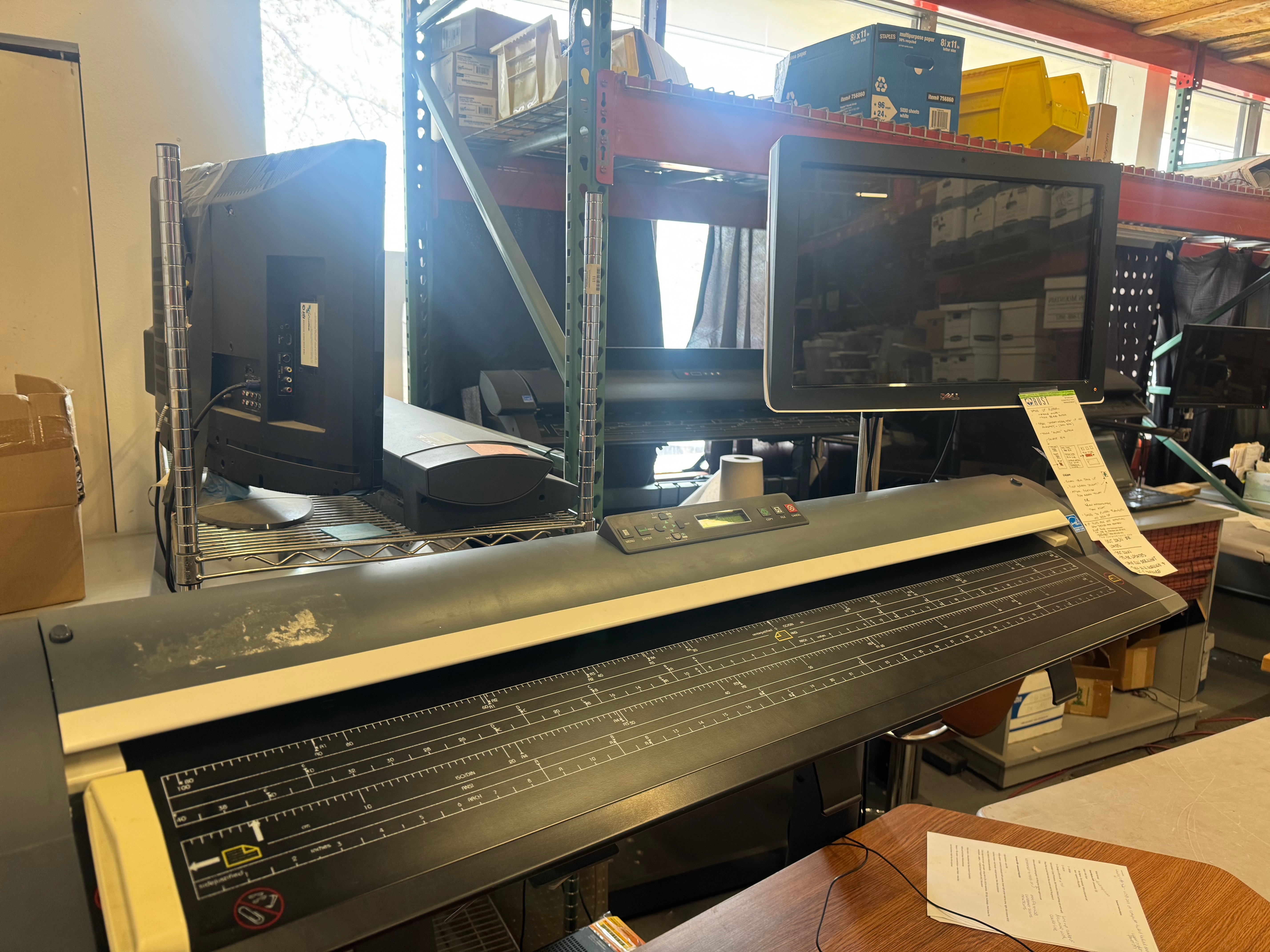


Roll-Feed Scanners: Features and Benefits
Roll-feed scanners, such as the Contex HD Ultra X series, are designed for high-speed scanning of large documents. These scanners feature a roll-fed mechanism that allows for continuous scanning of long documents, such as blueprints and technical drawings, without the need for manual intervention.
The Contex HD Ultra X series scanners offer exceptional scanning speed, with a top speed of 17.8 inches per second. This high-speed scanning capability significantly improves productivity and workflow efficiency. The scanners utilize CCD (Charge-Coupled Device) technology, which ensures accurate color reproduction and detailed scans.
The HD Ultra X series scanners also offer adjustable light control with no UV/IR radiation, providing extremely accurate color matching and 3D effect. The scanners are compatible with Contex’s Nextimage software, which further enhances the scanning experience with advanced scanning features and workflow optimization tools.
Key Features to Look for in Wide Format Scanners
When choosing a wide format scanner, there are several key features to consider:
- Resolution: Look for scanners with high optical resolution, measured in dots per inch (dpi), to ensure detailed and sharp scans.
- RGB Color: Scanners that offer RGB color scanning provide accurate color reproduction, making them ideal for scanning artwork and photographs.
- CCD or Contact Image Sensor (CIS): CCD scanners offer superior image quality and color accuracy, while CIS scanners are more cost-effective and energy-efficient.
- Scanning Size and Speed: Consider the maximum scanning size and speed of the scanner to ensure it can handle your document requirements efficiently.
Other features to consider include scanning software compatibility, connectivity options (USB, Ethernet, Wi-Fi), and the ability to handle different document types, such as thick or fragile materials.
Resolution and Image Quality Considerations
Resolution plays a vital role in determining the image quality of scans produced by wide format scanners. Higher resolution scanners are capable of capturing more details and producing sharper images.
The resolution of a scanner is measured in dots per inch (dpi). The higher the dpi, the more detailed the scan will be. For most applications, a resolution of 600 dpi is sufficient for accurate reproduction of large documents. However, if you require extremely high-quality scans, consider scanners with a resolution of 1200 dpi or higher.
Wide format scanners that offer RGB color scanning are ideal for capturing accurate color reproduction. By using red, green, and blue channels, these scanners can produce scans with vibrant and true-to-life colors, making them perfect for scanning artwork, photographs, and other color-sensitive documents.
Speed and Efficiency in Scanning Large Documents
Scanning large documents efficiently and quickly is essential for maintaining productivity and workflow efficiency. Wide format scanners that offer high scanning speeds can significantly improve the scanning process.
High-speed scanners, such as the Contex HD Ultra X series, can scan large documents at speeds of up to 17.8 inches per second, allowing for quick digitization of blueprints, maps, and technical drawings. These scanners eliminate the need for manual intervention, as they feature a roll-fed mechanism that enables continuous scanning of long documents.
Efficiency in scanning large documents can also be enhanced with the use of advanced scanning software. Features like automatic image enhancement, batch scanning, and file organization can streamline the scanning process and improve overall workflow efficiency. When choosing a wide format scanner, consider scanners that are compatible with software solutions that can optimize your scanning workflow.
Choosing the Right Wide Format Scanner for Your Needs
Choosing the right wide format scanner depends on various factors, including your specific scanning needs, the types of documents you work with, and your budget. Here are some considerations to keep in mind:
- Scanning Volume and Document Types: Determine the volume of documents you need to scan and the types of documents you will be scanning (blueprints, maps, artwork, etc.).
- Compatibility with Existing Systems and Software: Ensure that the scanner you choose is compatible with your existing systems and software to ensure seamless integration.
- Budget: Consider your budget and compare the features and capabilities of different scanner models to find the best value for your money.
By assessing your scanning requirements, document types, and budget, you can make an informed decision when choosing the right wide format scanner for your needs.
Assessing Your Scanning Volume and Requirements
Before purchasing a wide format scanner, it’s important to assess your scanning volume and requirements. Consider the following factors:
- Scanning Volume: Determine the number of documents you need to scan on a regular basis. This will help you determine the required scanning speed and capacity of the scanner.
- Types of Documents: Identify the types of documents you will be scanning. Different scanners are designed to handle specific types of documents, such as blueprints, maps, technical drawings, or artwork.
- Scanning Workflow: Consider how the scanner will fit into your existing scanning workflow. Will it be used as a standalone scanner or integrated into an existing system?
By assessing your scanning volume, document types, and workflow, you can choose a wide format scanner that meets your specific requirements and ensures efficient and accurate scanning.
Compatibility with Existing Systems and Software
When choosing a wide format scanner, it’s important to consider its compatibility with your existing systems and software. Compatibility ensures seamless integration and efficient workflow management. Here are a few points to consider:
- Software Compatibility: Check if the scanner is compatible with the scanning software you currently use or plan to use. This includes compatibility with operating systems and scanning applications.
- System Integration: Ensure that the scanner can easily integrate with your existing systems, such as network servers or document management systems, to streamline document storage and retrieval processes.
- Connectivity Options: Consider the connectivity options of the scanner, such as USB, Ethernet, or Wi-Fi, to ensure compatibility with your existing network infrastructure.
By ensuring compatibility with your existing systems and software, you can seamlessly incorporate the wide format scanner into your workflow and maximize its potential.
Top Wide Format Scanners on the Market
When it comes to wide format scanners, several top models are available on the market. These scanners offer advanced features, high-quality scans, and efficient workflow management. Here are some of the top wide format scanners:
- Contex HD Apeiron: This contact-free scanner is designed for detailed originals, delicate documents, and fine art. It offers adjustable light control and accurate color matching.
- SD One: The SD One series scanners are versatile and equipped with a touchscreen for easy operation, editing, and sharing of scans.
- Contex IQ Quattro: The IQ Quattro series scanners are high-speed and efficient, offering fast scanning and precise image quality.
These top wide format scanners provide a range of options to suit different scanning needs, ensuring high-quality scans and improved workflow efficiency.
Model Comparisons and User Reviews
When choosing a wide format scanner, it’s helpful to compare different models and consider user reviews. Here is a comparison of popular wide format scanner models:
|
Scanner Model |
Features |
User Reviews |
|
Contex HD Apeiron |
Contact-free scanning, adjustable light control |
“The HD Apeiron provides accurate color matching and detailed scans.” – John S. |
|
SD One |
Touchscreen operation, versatile scanning options |
“The SD One is user-friendly and produces high-quality scans.” – Emily T. |
|
Contex IQ Quattro |
High-speed scanning, precise image quality |
“The IQ Quattro is fast and delivers sharp scans.” – David M. |
By considering the features and user reviews of different wide format scanner models, you can make an informed decision and choose the scanner that best suits your needs.
Price Range and Value for Money
Wide format scanners are available at various price points, depending on their features and capabilities. When considering the price range, it’s important to assess the value for money that each scanner offers. Factors to consider include:
- Features and Capabilities: Compare the features and capabilities of different scanner models and determine which ones provide the most value for your specific scanning needs.
- Warranty and Support: Check the warranty period and the level of support provided by the manufacturer. A longer warranty and reliable customer support can add value to your investment.
- Pricing and Budget: Consider your budget and compare the pricing of different scanner models to find the best value for your money.
By carefully assessing the price range and value for money, you can choose a wide format scanner that meets your requirements without stretching your budget.
Innovative Technologies in Wide Format Scanning
Wide format scanning technology continues to advance, bringing innovative features and improved performance to the market. Some of the latest advancements include:
- Advances in Imaging: New imaging technologies, such as CCD (Charge-Coupled Device) and CIS (Contact Image Sensor), offer improved image quality, color accuracy, and scanning speed.
- Optical Technology: Optical technologies, like adjustable light control and UV/IR radiation-free scanning, ensure accurate color matching and protect delicate documents from damage.
- Future Trends: The future of wide format scanning is expected to bring advancements in faster scanning speeds, higher resolution, and enhanced workflow optimization tools.
By staying updated on the latest innovations in wide format scanning, businesses and professionals can make informed decisions and choose scanners that incorporate the latest technologies for improved scanning performance.
Advances in Imaging and Optical Technology
Advances in imaging and optical technology have significantly improved the performance and capabilities of wide format scanners. Here are some key advancements:
- CCD Technology: CCD (Charge-Coupled Device) technology offers superior image quality, color accuracy, and resolution. CCD scanners, such as the Contex HD Ultra X series, capture detailed scans with precise color reproduction.
- High-Quality Lenses: Wide format scanners utilize high-quality lenses to ensure sharp and accurate scans. These lenses play a crucial role in capturing fine details and maintaining image clarity.
- Image Sensor: The image sensor used in wide format scanners is a critical component that captures the scanned image. CCD and CIS (Contact Image Sensor) technologies are commonly used, each offering its own advantages in terms of image quality and scanning speed.
Advancements in imaging and optical technology have resulted in wide format scanners that deliver high-quality scans with accurate color reproduction, meeting the demands of various industries.
Future Trends in Large Document Scanning
The field of large document scanning is constantly evolving, with new technologies and trends shaping the future of this industry. Here are some future trends to look out for:
- Faster Scanning Speeds: Advances in scanning technology will continue to push the boundaries of scanning speed, allowing for even faster and more efficient scanning of large documents.
- Higher Resolution: As technology improves, scanners will be capable of capturing even finer details, resulting in higher-resolution scans for large documents.
- Improved Workflow Optimization: Scanning software will continue to evolve, offering more advanced features and tools to streamline scanning workflows, automate processes, and enhance productivity.
As technology continues to advance, the future of large document scanning looks promising, with innovations that will further improve the efficiency and capabilities of wide format scanners.
Setting Up Your Wide Format Scanning Station
Setting up a well-equipped wide format scanning station is essential for optimizing workflow and ensuring efficient scanning processes. Here are some key considerations when setting up your scanning station:
- Essential Equipment: Invest in a high-quality wide format scanner, adjustable stand, and any necessary accessories, such as a catch basket or document basket.
- Ergonomic Design: Ensure that your scanning station is ergonomically designed, with adjustable heights and comfortable working positions to prevent strain and maximize productivity.
- Optimizing Workflow: Organize your scanning station to minimize clutter and optimize workflow. Keep essential tools and software within easy reach to streamline the scanning process.
By setting up a well-designed scanning station, you can create a productive and efficient environment for large document scanning.
Essential Equipment and Accessories
When setting up your wide format scanning station, there are essential equipment and accessories to consider. Here are some key items:
- Adjustable Stand: An adjustable stand allows you to position your scanner at the optimal height for scanning, ensuring comfort and ergonomics during the scanning process.
- Accessories: Depending on your specific requirements, accessories such as a catch basket or document basket can help organize and store scanned documents.
- PC or Computer: A PC or computer is essential for controlling the scanner, running scanning software, and managing scanned files.
By ensuring you have the necessary equipment and accessories, you can create a well-equipped scanning station that enhances workflow efficiency and productivity.
Tips for Optimizing Your Scanning Workflow
Optimizing your scanning workflow is crucial for maximizing productivity and efficiency. Here are some tips to help you optimize your scanning workflow:
- Organize Documents: Sort and organize your documents before scanning to streamline the scanning process and ensure accurate file organization.
- Batch Scanning: Scan multiple documents at once by using batch scanning features in your scanning software. This saves time and improves efficiency.
- File Naming and Organization: Use consistent file naming conventions and folder structures to make it easy to locate and retrieve scanned documents.
- Automate Processes: Take advantage of automation features in your scanning software to automate repetitive tasks, such as file naming, saving, and exporting.
By implementing these tips, you can optimize your scanning workflow, saving time and improving overall efficiency.
Maintenance and Care for Wide Format Scanners
Proper maintenance and care are essential for ensuring the longevity and optimal performance of your wide format scanner. Here are some key considerations:
- Routine Maintenance: Follow the manufacturer’s recommended maintenance schedule, which may include cleaning the scanner, replacing parts, and updating software.
- Careful Handling: Handle the scanner with care to prevent physical damage. Avoid exposing the scanner to excessive heat, moisture, or dust.
- Troubleshooting: Familiarize yourself with the scanner’s user guide and troubleshooting resources to address common issues or errors that may arise.
By providing regular maintenance and careful handling, you can extend the lifespan of your wide format scanner and minimize downtime due to technical issues.
Routine Maintenance Tips
Routine maintenance is vital to keep your wide format scanner in optimal condition. Here are some tips for routine maintenance:
- Clean the Scanner: Regularly clean the scanning surface, glass, and rollers using a soft cloth or recommended cleaning solutions to ensure accurate scans and prevent debris buildup.
- Update Software: Keep your scanning software up to date by regularly installing updates and patches provided by the manufacturer. This ensures compatibility and improved performance.
- Calibration: Follow the manufacturer’s recommendations for calibration to maintain accurate color reproduction and precise scanning.
- Check for Wear and Tear: Regularly inspect the scanner for any signs of wear and tear, such as loose cables, damaged parts, or abnormal noises. Address any issues promptly to prevent further damage.
By following these routine maintenance tips, you can ensure the longevity and optimal performance of your wide format scanner, minimizing downtime and maintaining ease of use.
Troubleshooting Common Issues
Wide format scanners may encounter common issues from time to time. Here are some common issues users may face and possible troubleshooting steps:
- Scanner Not Detected: Ensure that all cables are securely connected and that the scanner is powered on. Check the software settings for any configuration issues.
- Paper Jams: Clear any paper jams carefully as per the manufacturer’s instructions. Ensure that the paper is properly aligned and not wrinkled.
- Scanning Quality Issues: Clean the scanning surface and glass to remove any debris that may affect the scanning quality. Check the scanner settings for resolution and color settings.
- Software Errors: Restart the scanning software and the scanner. Update the software to the latest version and reinstall if necessary.
If issues persist, refer to the scanner’s user guide or consult the manufacturer’s support resources for further troubleshooting assistance.
Conclusion
In conclusion, wide format scanning solutions are a crucial technology for industries dealing with large documents. Understanding the basics, types, key features, and innovative technologies can help you choose the right scanner for your needs. With advancements in imaging and optical technology, the future of large document scanning looks promising. Setting up an efficient scanning station and proper maintenance are essential for optimal performance. If you’re looking to streamline your document management process, investing in a high-quality wide format scanner is a smart choice. Experience the benefits of faster scanning, improved image quality, and enhanced efficiency in handling large documents today.
Frequently Asked Questions
How Wide Should a Scanner Be to Handle Large Format Documents?
The width of a large scanner for blueprints should be wide enough to handle the shorter side of your largest documents. For example, if you regularly scan 36-inch wide documents, consider a wide format large scanner for blueprints with a scan width of at least 36 inches or larger.
Can Wide Format Scanners Also Print?
Wide format large scanners for blueprints are primarily designed for scanning large documents. While some large scanners for blueprints may have optional printing capabilities, most wide format large scanners for blueprints are dedicated to scanning only. For printing capabilities, it is recommended to use a wide format printer or a multifunction printer that includes scanning and printing functionalities.
Are There Portable Options for Wide Format Scanning?
While wide format large scanners for blueprints are typically large and not easily portable, there are portable options available for wide format scanning. These portable large scanners for blueprints are designed to be lightweight and compact, allowing for easy transportation and on-the-go scanning.
What Software is Recommended for Editing Scanned Images?
Several software options are available for editing scanned images, depending on your specific requirements. Some popular software options include Adobe Photoshop, GIMP, and CorelDRAW. It is recommended to choose software that is compatible with your operating system and provides the necessary editing tools for your specific image editing needs.

